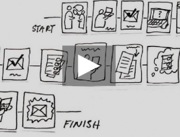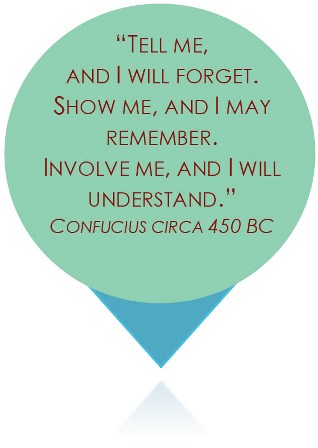Engineering Lab: Design Thinking in Education
Session leaders
Boukje Vastbinder & Jeroen Spoelstra AM I A De-signer
Introduction
In this era of fierce industry competitiveness, educational institutions -especially in the engineering field- are continuously searching for new ways to improve their education quality. The challenges teachers are confronted with, to be able to meet the students’ needs, are real, complex, and varied. And as such, they require new perspectives, new tools, and new approaches. Design Thinking is one of them. Design thinking is defined as combining empathy for the context of a problem, creativity in the generation of insights and solutions, and rationality in analyzing and fitting various solutions to the problem context.
About the session
The Engineering Lab - Design Thinking in Education session introduces you to the concepts of Design Thinking in education and we will show you how to use the design process to create and facilitate more meaningful engineering education programmes for you, your school and your students.

Throughout the session we guide you through a short design loop. Personas and an Empathy Map are used to give your an optimal feeling for the needs TU students. We brainstorm about what content we could offer these students and the way we offer that to them. And we will design a first draft of an education program/course or workshop, which will fulfill these needs using a Learning Journey Map.
Session outline
- Introduction to Design Thinking in Education
- Filling in a Empathy Map of the future engineering student
- Brainstorm about the content to be developed for students related to insights generated by filling in the Empathy Map
- Filling in the emphatic Learning Journey Map using the content and actions generated through the brainstorm
- Make Educational Business Model Canvas
- Present end-results and final wrap up
Outcome
After the event CEE will share the session outcome of the Engineering and Creative Lab in a magazine format with you. The report will at least consist of an analysis, learning points, recommendations and next steps.
Creative Lab: Creating feedback for tomorrow’s Engineer
Session leaders
Lili Sukirman MSc MDS, lecturer at TU Delft
Introduction
In this era of fierce industry competitiveness, educational institutions -especially in the engineering field- are continuously searching for new ways to improve their education quality. The vast and agile flows of today’s information have placed “Sharing” as the core of learning activities. It allows an iterative creation and reflection, thus anyone can learn from and get/give feedback to practically anyone around the world. Despite its various benefits, this also challenges the current teaching and evaluating methods: the students demand reflection and feedback to be more open and agile, thus educators are facing new challenges to keep up with these expectations.
About the session
Are you facing challenges of giving/receiving feedback or have vision or wishes to make a change by improving your feedback process?
During this session we will use various creative (yet structured) problem-solving methods to have constructive discussions and to solve the following three main challenges:
- How to gain insights about what students’ and educators’ needs from a constructive feedback process?
- How to embrace dynamics of new technology to improve feedback process in engineering education?
- How to create NEW FEEDBACK METHODS fit for tomorrow’s engineers?
We will use an interactive approach where you and your fellow participants collaborate in a creative problem-solving session where giving and receiving feedback is the key in creating new solutions.

Outcome
The outcome consists of possible concepts revealing new ways for giving and receiving feedback. The experience teaches that after the session the developed feedback strategies often can be immediately applied in the classes. After the event CEE will share the session outcome of the Engineering and Creative Lab in a magazine format with you. The report will at least consist of an analysis, learning points, recommendations and next steps.



